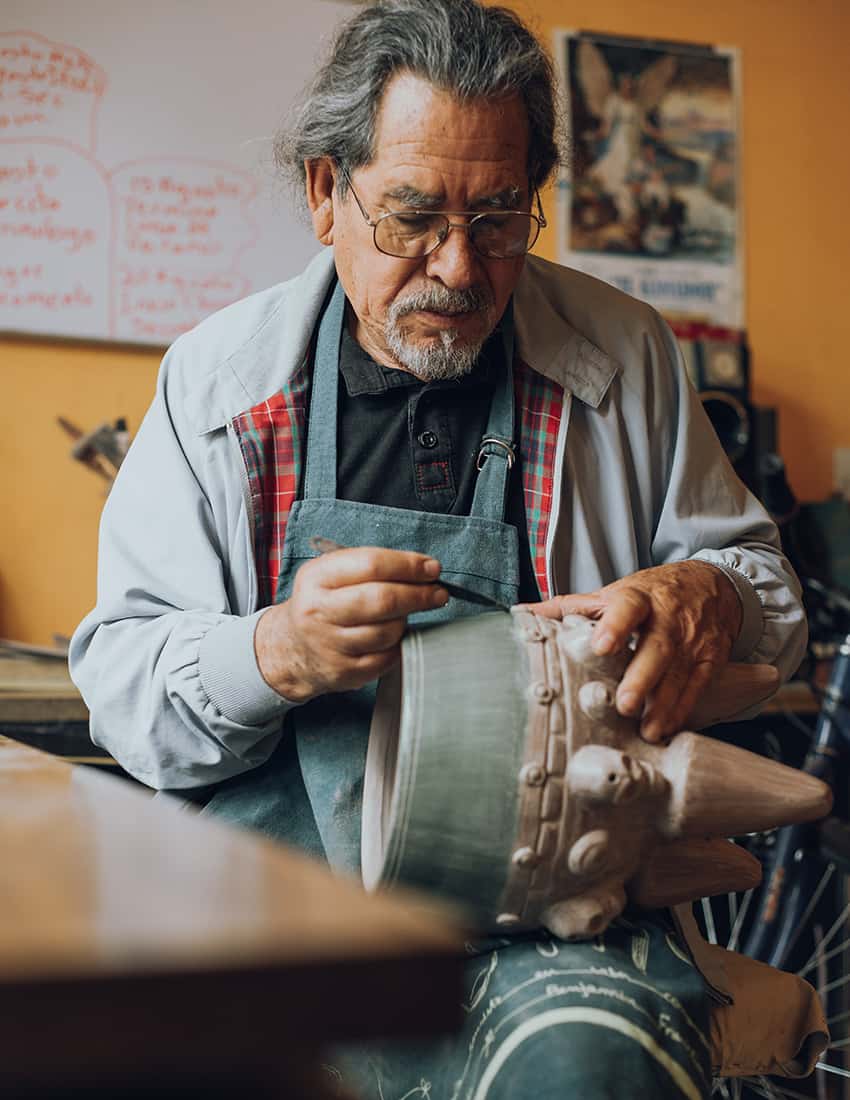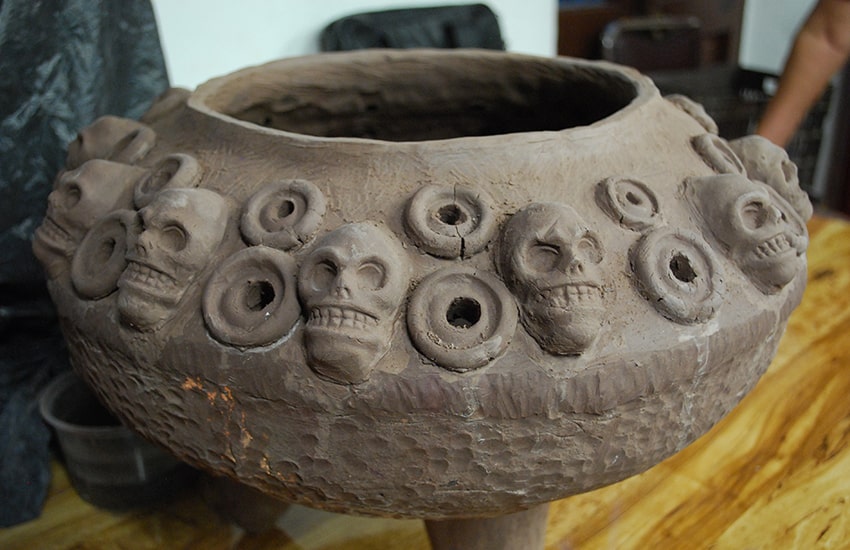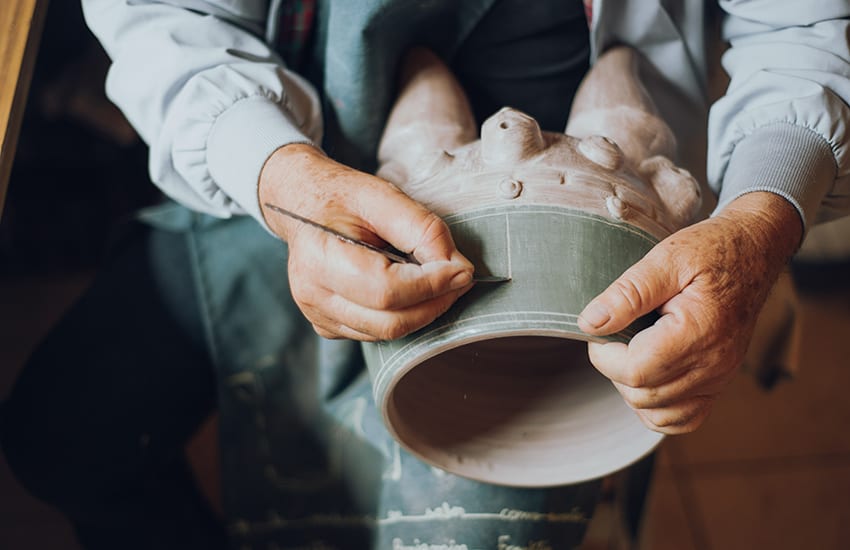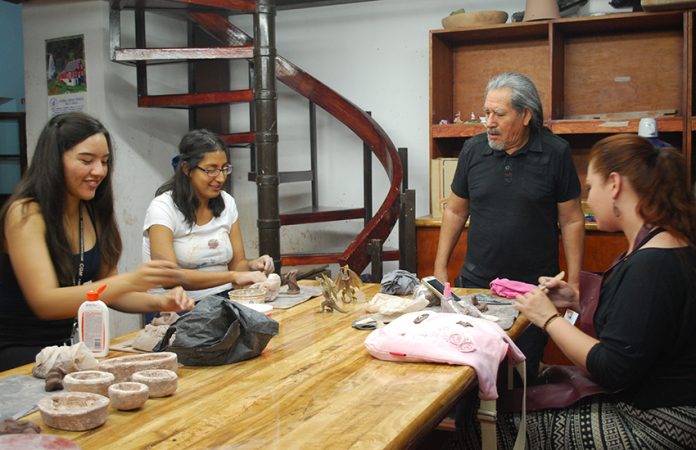You might have heard of Durango, Colorado, or the Ford Durango or perhaps you have even seen the map of the Mexican state in the movie Rango, but most foreigners have no clue about this Mexican city.
I know I didn’t until I spent three months there subbing for a teacher on maternity leave.
The city is where colonial Mexico meets the northern frontier, on an isolated fringe of the Central Mexican Plateau. But thanks to one of the highest bridges in the world, it is only three hours from Mazatlán.
Like many isolated parts of Mexico, Durango has managed to conserve much of its distinctive culture and in the case of local artist Trinidad Núñez Quiñones, reinvent it.
Trino, as he prefers to go by, is a quiet, modest man. Long hair streaked with gray, maestro Núñez looks younger than his 73 years.

He is a longtime fixture at the state university and the city’s main cultural center. The ceramics workshop there is named after him.
His career came from a twist of fate. He was born the youngest of six on his family’s farm in the municipality of Canatlán, famous for its apples. His upbringing was normal until 1953, when a neighbor came for his father over a dispute about horses.
In the end, the neighbor lay dead, and the family had to separate and flee. Trino, his mom, and his siblings wound up on the outskirts of Durango city with nothing.
The upside was that in public school he found that he had a talent and passion for art. Since then, he says, “Art always came first — my true mistress.”
Núñez has worked in various media, canvas, sculpture and even papier-mache (or as it’s known in Mexico, cartonería), but his main success and contributions to Durango come from his work in ceramics, both as handcraft and fine art.
Among his ceramic work, what stands out most are the vessels and other items that he’s decorated with finely detailed designs based on the local Chalchihuite culture. The idea is similar to the recreation and reinterpretation that resulted in Mata Ortiz pottery in neighboring Chihuahua, but Núñez’s work stays a bit more faithful to the look of the original.

They are made by painting a burnt orange, blue or green clay slip over the main body of the piece, then painstakingly etching the lines by hand, a technique called sgraffito.
The process is simple but requires patience and a very steady hand. Although the idea come from indigenous culture, this version of it is all his.
Like many artists and artisans, teaching pays the bills. But over 50 years, it has provided the maestro the opportunity to develop an artistic community in a town far more associated with cows and movie sets for westerns.
Although he retired from the university in 2012 after 40 years, Núñez still runs the workshop at the cultural center he founded in 1980 and teaches students of all ages and interests.
When I was there, an Australian woman was having a go in the workshop, attracted by both the man’s work and his reputation.
He estimates that he has taught over 8,000 students in various arts and handcrafts. Teaching projects have also included programs in extremely poor and indigenous communities in the hopes that pottery and ceramics can raise income levels.

He has a home-based workshop, Taller Toltecatl, where he works with wife Norma Elizabeth Campus and his son, Gerardo. Here, they work not only on his signature sgraffito but various other styles of pottery as well.
One type has bright colors and bold designs, and the other consists of pieces painted to imitate works in copper and bronze.
There is a jet-black type inspired by Oaxaca’s black clay pottery, but the forms are quite different from what is done there. The color comes not from painting or the clay itself, but rather firing with a kiln filled with smoke.
The cultural center downtown is currently closed due to the pandemic, but that has not stopped the maestro. With the help of younger family members, he has ventured into online teaching and now has a Facebook page, Productos Cerámicos Trino.
He also found a silver lining to the lack of teaching work — more time to experiment with more types of ceramics.
Leigh Thelmadatter arrived in Mexico 18 years ago and fell in love with the land and the culture in particular its handcrafts and art. She is the author of Mexican Cartonería: Paper, Paste and Fiesta (Schiffer 2019). Her culture column appears regularly on Mexico News Daily.
